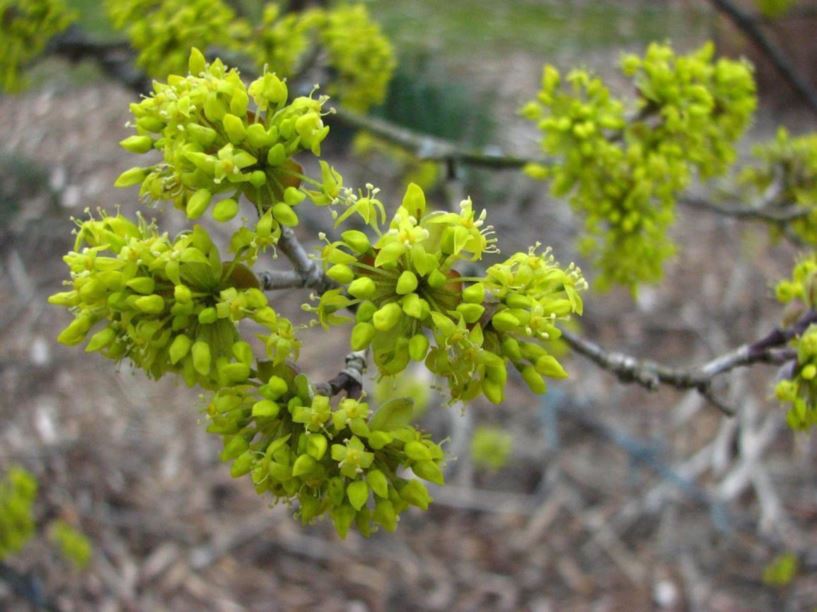

The bioavailability of natural compounds occurring in plant materials, food, and their preparation is particularly in the field of interest when their health beneficial effects require justification or molecular background.įruits of cornelian cherry ( Cornus mas L., Cornaceae) are traditionally known to support the therapy for a plethora of ailments, such as diarrhea, fever, and gastrointestinal problems, and to enhance kidney and liver functions. The stability of chemicals in the gastrointestinal tract determines the first step of pharmacokinetics such as absorption. The arisen questions concern the effect of plant materials on gut microbiota and its effect on metabolic changes of phytochemicals and their bio-accessibility. However, the bidirectional influence of nutrients and gut microbiota determines health and beneficial effects for the host. Increasing attention has been paid to the significance of the gut microbiome in the development of obesity-related complications recently. The booster of these supportive fundamentals is an increased consumption of fruit and vegetables, taking into consideration that some of them inhibit the uptake of glucose and fructose or lipids. Promoting healthy, plant-based diets, reducing the fat, sugar, and salt content in processed foods, as well as increasing physical activity are key support in obesity prevention. Obesity is considered a risk factor for several chronic disorders, including cardiovascular diseases, diabetes complicated by blindness, limb amputations, kidney failure, several cancers, and musculoskeletal disorders. In 2016, there were more than 39% (1.9 billion) overweight adults aged over 18 years. The prevalence of obesity has tripled since 1975, according to the World Health Organization. The presence of plants’ secondary metabolites in the intestinal fractions allows us to indicate them as responsible for decreasing glucose and lipid absorption.Ĭhanging life facilities leading to a decrease in physical activity in addition to an increased intake of energy-dense food results in obesity, which is dramatically increasing. In conclusion, cornuside, aromadendrin, and phenolic acids may be potentially bio-accessible compounds of CM. It was not detected in the samples after 6 and 24 h incubation with FS. Cornuside was found in FS analyte after 3 h incubation. Phenolic acids (protocatechuic acid, gallic acid), tannins (digalloylglucose, tri- O-galloyl- β-D-glucose), and flavonoids (aromadendrin, dihydroquercetin) were detected in the late phases of digestion in fecal slurry suspension. The metabolites originating from kinetic analytes have been classified mainly as phenolic acids, hydrolyzable tannins, and flavonoids. Cornusiin A was tentatively assigned in the gastric fraction. The signals of tannins were detected in all fractions. In all fractions, kaempferol hexoside and reduced forms of kaempferol, such as aromadendrin, and benzoic acid were assigned. It was found in most analytes such as salivary, gastric, intestinal, and even colon (fecal slurry, FS) fractions.

Loganic acid as the main constituent of the extract was digested in the experimental conditions in contrast to cornuside.

The gastric and intestinal fractions obtained after in vitro digestion of CM inhibited pancreatic lipase and α-amylase. The effect of fractions from gastrointestinal digestion in vitro on the activity of pancreatic lipase and α-amylase was studied with fluorescence-based assays. The digestion of extract was simulated with digestive enzymes in vitro and human gut microbiota ex vivo (1 h, 3 h, 6 h, 24 h), followed by chromatographic analysis using the UHPLC-DAD-MS n method.

Taking into consideration the significance of bio-accessibility of compounds, we attempted to identify metabolites of CM after gastrointestinal digestion in vitro, as well as their kinetic changes upon gut microbiota treatment. Targeting pancreatic lipase and α-amylase by digestion-derived fractions of ethanolic-aqueous (60%, v/ v) extract from Cornus mas fruit (CM) in relation to the control and prevention of metabolic disorders, including diabetes, was the first purpose of the present study.


 0 kommentar(er)
0 kommentar(er)
